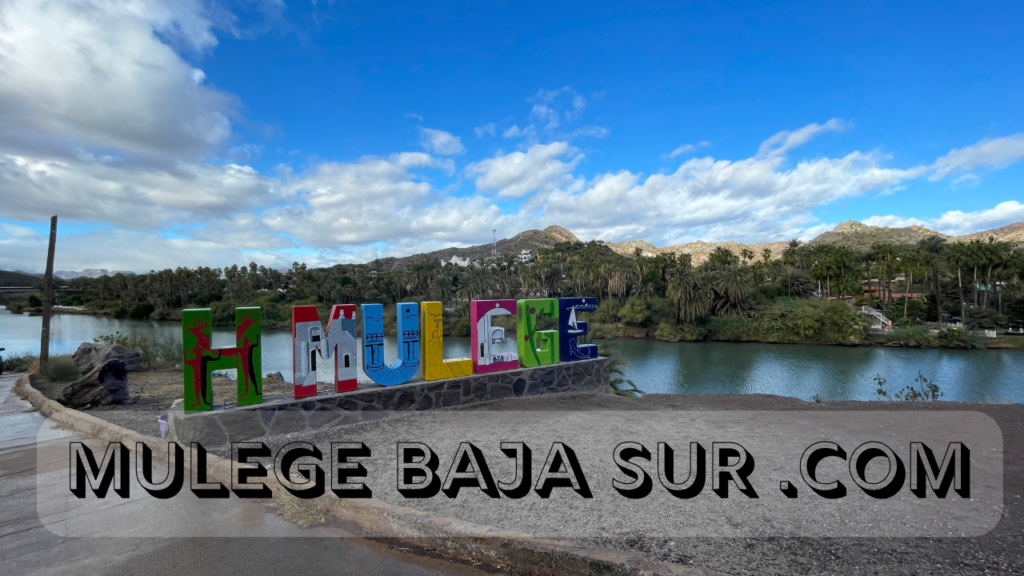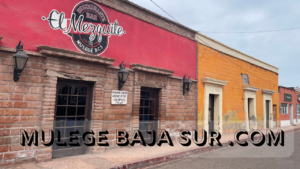A Journey Through Time: Exploring the Rich History of Baja California Sur
Welcome to Mulegé, a town steeped in the captivating history of Baja California Sur! From ancient cave paintings to the arrival of the Spanish and the rise of tourism, this peninsula holds a story as diverse as its landscapes. Let’s embark on a journey through time to uncover the layers of Baja Sur’s past.
Pre-Columbian Era: Echoes of Ancient Civilizations
- Long before the arrival of Europeans, Baja California Sur was home to indigenous groups like the Pericúes, Guaycuras, Monquis, and Cochimí. These hunter-gatherer societies thrived in this challenging environment, leaving behind a legacy that whispers through the ages.
- Step back in time by exploring the Great Mural Rock Art, a site showcasing paintings that date back to 1700 BCE. Imagine the lives of these early inhabitants as you gaze upon the monumental figures of animals and people, frozen in time on the rock face.
- Other significant cave painting sites, like Cueva de Palma and San Gregorio, offer further glimpses into the lives, beliefs, and artistry of these ancient cultures. These paintings are not mere decorations – they hold stories, rituals, and a deep connection to the natural world that sustained these people.
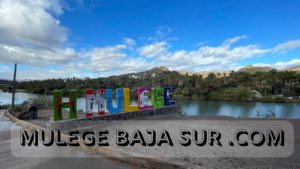
The Arrival of the Spanish: A Turning Point in Baja Sur’s History
- The arrival of the Spanish in the 16th century marked a pivotal moment in Baja Sur’s history. Fortún Ximénez, a rebellious navigator, is believed to be the first Spaniard to set foot on the peninsula in 1533. His arrival, unfortunately, was marred by conflict with the indigenous population, highlighting the complex and often fraught encounters between different cultures.
- Hernán Cortés, the famous conquistador, also made his mark on the peninsula, navigating the Gulf of California in 1535 and establishing a short-lived settlement in what is now La Paz.
- It was not until the late 17th century that lasting Spanish influence took root. Jesuit missionary Juan María de Salvatierra founded the Misión de Nuestra Señora de Loreto Conchó in 1697, marking the beginning of a significant missionary presence in the region.
- From Loreto, the mission system expanded, with the Jesuits, Franciscans, and Dominicans playing a role in shaping the cultural and religious landscape of Baja California Sur.
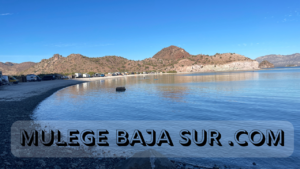
Mission Legacy: Enduring Architectural Treasures
- Though many missions eventually closed, their architectural legacy remains. Visit the Loreto Mission, the La Paz Cathedral, the San José del Cabo Mission, and the San Javier Mission to witness the enduring beauty of these colonial structures. Imagine the daily life of the missionaries and the indigenous people who lived and worked within these mission compounds.
Baja California Sur: From Territory to State
- The 19th century saw significant political shifts in Mexico, including the Mexican War of Independence and the Mexican-American War. While Baja Sur remained relatively isolated from the fighting, it did experience the effects of these conflicts.
- In 1888, the peninsula was divided into north and south, with the southern portion becoming El Territorio Sur de Baja California. This division, driven in part by economic interests, laid the foundation for the eventual statehood of Baja California Sur.
- During the 20th century, the territory continued to develop, with infrastructure improvements and the establishment of educational institutions.
- Finally, on October 8, 1974, Baja California Sur achieved statehood, becoming the 31st state of Mexico. This marked a new chapter in the region’s history, ushering in an era of greater autonomy and self-governance.

Modern Baja California Sur: A Thriving Tourist Destination
- Today, Baja California Sur is known for its stunning natural beauty, attracting tourists from around the world. Explore the diverse landscapes, from the rugged mountains of the Sierra de la Giganta to the pristine beaches of Cabo San Lucas and San José del Cabo.
- The state’s economy has shifted towards tourism and services, offering a wide range of activities, including whale watching, sport fishing, golfing, and scuba diving.
- As you enjoy the modern amenities of Baja California Sur, remember the layers of history that have shaped this unique place. From ancient cave paintings to Spanish missions and the journey to statehood, Baja Sur’s past is woven into the fabric of its present.
Come explore the magic of Mulegé and Baja California Sur! Immerse yourself in the rich history and vibrant culture of this captivating peninsula. Every corner you turn, every sight you see, tells a story waiting to be discovered.
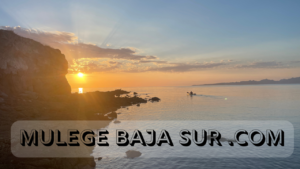
Pre-Columbian Era:
- The area that is now Mulegé was likely inhabited by indigenous groups like the Cochimí, who lived in the central part of the peninsula.
- These groups were hunter-gatherers who created cave paintings and rock art, evidence of which can be found in various sites throughout Baja California Sur.
Spanish Colonial Period:
- The arrival of the Spanish in the late 17th century brought Jesuit missionaries who established missions throughout the peninsula.
- While the sources don’t mention a specific mission in Mulegé, it’s likely that the mission system influenced the development of the area.
19th and 20th Centuries:
- After the Mexican War of Independence, Baja California Sur was divided into four municipalities, with Loreto as the original capital.
- In 1828, Loreto was severely damaged by heavy rains, leading to the relocation of the capital to La Paz.
- The peninsula was further divided in 1888, creating the El Territorio Sur de Baja California.
- This period saw the development of infrastructure, including the construction of a highway extending the length of the peninsula in 1931.
- Baja California Sur finally achieved statehood in 1974.

Mulegé Today:
- Mulegé is now the seat of the municipality of Mulegé, which is the largest municipality in Baja California Sur, covering almost 45% of the state’s territory.
- The municipality includes other important population centers like Guerrero Negro and the town of Mulegé itself.
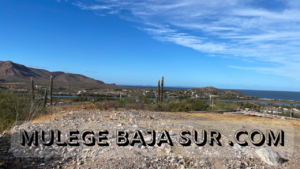
Understanding the Bay of Conception through the Lens of Baja California Sur’s History and Geography
The Bay of Conception, nestled on the eastern coast of the Baja California peninsula, is shaped by the same forces that have molded the entire region. To understand the bay, one must consider the broader context of Baja California Sur’s history and unique environment.
- Geological Formation: The Bay of Conception, like the peninsula itself, is a product of millions of years of tectonic activity. The separation of the Baja California peninsula from mainland Mexico created the Gulf of California, of which the bay is a part. This geological history has endowed the bay with its distinctive shape and a coastline characterized by dramatic cliffs, sandy beaches, and hidden coves.
- Climate and Ecology: The Bay of Conception lies within the arid climate zone that dominates Baja California Sur. The region experiences low annual rainfall and high temperatures, creating a desert environment that extends to the coastline. However, the bay, like other coastal areas, benefits from the moderating influence of the sea, resulting in slightly cooler temperatures than inland regions. This arid climate shapes the bay’s ecosystem, supporting a unique array of desert-adapted plants and animals.
- Early Inhabitants: Before the arrival of Europeans, indigenous groups, likely the Guaycura or Cochimí, inhabited the areas surrounding the Bay of Conception. These groups would have adapted to the challenging desert environment, relying on the bay’s resources for sustenance. Evidence of their presence might be found in the form of cave paintings or archaeological sites near the bay, although further research is needed to confirm this.
- Spanish Exploration and Colonization: The arrival of the Spanish in the 16th century brought significant changes to Baja California Sur, including the Bay of Conception. While the sources do not mention specific Spanish settlements on the bay, exploration of the Gulf of California by figures like Hernán Cortés suggests that the bay would have been charted and potentially utilized for navigation. The establishment of missions, such as the Misión de Nuestra Señora de Loreto Conchó, further south, demonstrates the Spanish interest in the region and the potential influence they may have had on the bay’s development.
- Economic Activities: The sources highlight the importance of fishing and tourism to Baja California Sur’s economy. These activities likely play a significant role in the Bay of Conception as well. The bay’s calm waters and diverse marine life would have attracted fishermen for centuries, while its natural beauty makes it an ideal destination for tourists seeking to experience the unique environment of Baja California Sur.
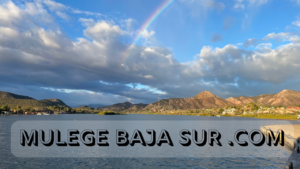
Key Areas for Further Research
To develop a detailed and engaging description of the Bay of Conception, consider exploring the following aspects:
- Detailed Geography: Explore the bay’s specific geographical features, including its size, depth, surrounding landforms, and any notable islands or inlets. This information will provide a foundational understanding of the bay’s physical characteristics.
- Marine Life: Explore the diversity of marine life found in the Bay of Conception. Research the various species of fish, invertebrates, and marine mammals that inhabit the bay. This information could highlight the ecological significance of the bay and its role in supporting marine biodiversity.
- Coastal Communities: Investigate the history and development of any towns or villages located along the Bay of Conception. Research their origins, economic activities, and cultural traditions. This will provide insights into the human relationship with the bay and how people have interacted with this environment over time.
- Tourism and Recreation: Explore the tourism potential of the Bay of Conception. Research popular tourist activities, such as kayaking, whale watching, fishing, or snorkeling. Investigate the presence of resorts or other tourist infrastructure. This information will showcase the bay’s appeal as a destination for travelers seeking natural beauty and outdoor adventures.
- Conservation Efforts: Research any ongoing conservation efforts focused on the Bay of Conception. Investigate the presence of protected areas, such as national parks or biosphere reserves, and any initiatives aimed at protecting the bay’s fragile ecosystem. This information highlights the importance of preserving the bay’s natural heritage for future generations.
By exploring these areas and weaving together historical context, geographical details, ecological insights, and cultural perspectives, you can create a captivating and informative portrayal of the Bay of Conception, showcasing its unique beauty and significance within the broader narrative of Baja California Sur.
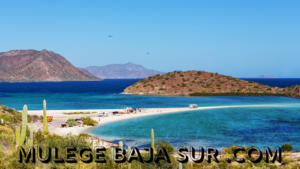
The History of Baja California Sur is a captivating tapestry woven with the threads of Spanish colonization, indigenous culture, and the transformation into a Mexican state. This region, characterized by its diverse landscapes ranging from arid deserts to serene coastlines, first witnessed European influence with the arrival of Spanish explorers in the 16th century. The Jesuit, Franciscan, and Dominican missionaries played pivotal roles in establishing missions, leaving a profound imprint on the cultural and architectural landscape. Over the centuries, the History of Baja California Sur has been marked by significant events, including participation in the Mexican Revolution and the eventual attainment of statehood in 1974. The region’s past is a testament to resilience, adaptation, and the blending of diverse cultural influences.
Delving deeper into the History of Baja California Sur reveals the enduring legacy of its indigenous peoples, such as the Pericúes, Guaycuras, Cochimí, and Monquis. These communities thrived for centuries before Spanish arrival, leaving behind cave paintings that continue to fascinate archaeologists and visitors alike. Fishing and agriculture were central to their way of life, traditions that persist today alongside modern tourism and cuisine. The Mexican Revolution brought about reforms and an eventual path to statehood, reflecting the region’s complex socio-political evolution. Understanding the History of Baja California Sur is crucial for appreciating its dynamic cultural heritage, the enduring spirit of its people, and its transformation into a vibrant destination for travelers and history enthusiasts.
